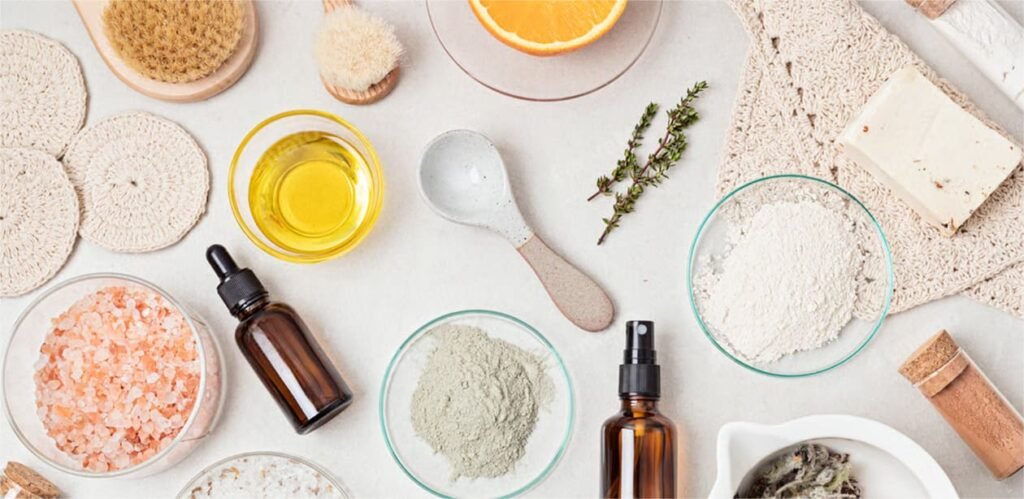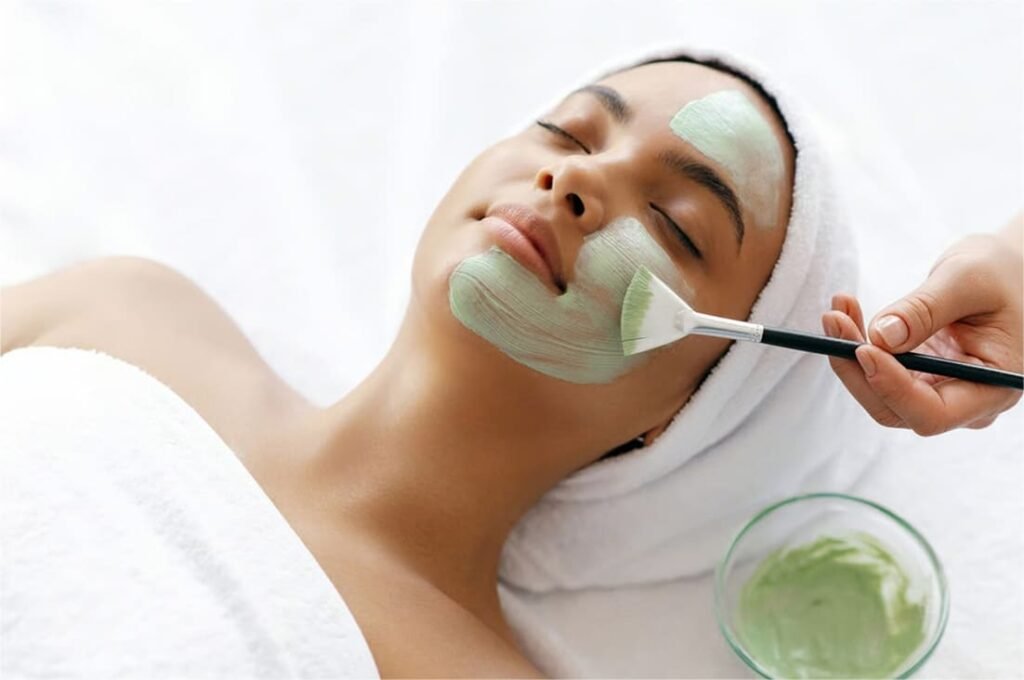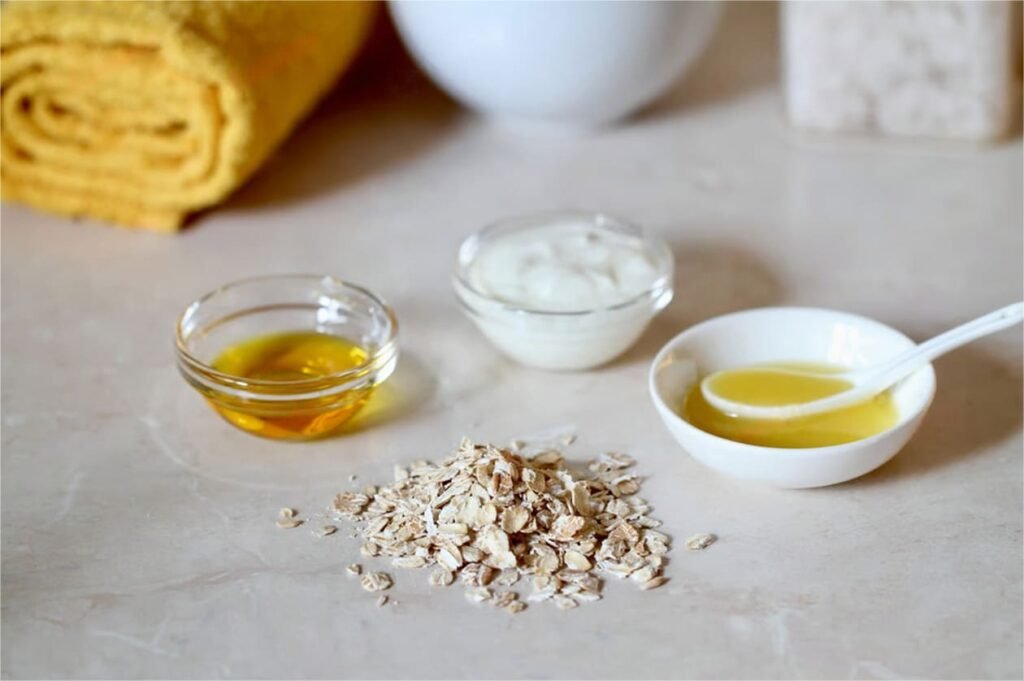You’ve seen those Instagram reels showing a luscious avocado‑honey DIY mask, and you’ve eyed the sleek jars of lab‑tested clay masks at the drugstore. But which truly gives you that glow without irritation or wasted time? Homemade masks boast fresh, nutrient‑rich ingredients you can tweak to your exact needs, yet lack preservatives and consistent potency. Store‑bought masks guarantee precise active levels, safety testing, and a 12–24‑month shelf life. So which truly delivers better results? Whether you’re a weekend spa devotee or a busy professional grabbing pre-made tubs, this guide digs into the real pros and cons of each option.
What Are the Main Differences Between Homemade and Store-Bought Face Masks?
Homemade masks use fresh, whole foods without preservatives, allowing peak nutrient potency but offering variable efficacy and shelf life. Store-bought masks deliver lab-tested actives at precise concentrations, rigorous safety checks, and stable formulations—ensuring consistent results every time.
Ingredient Source & Potency
- Homemade: Fresh honey contains active enzymes like glucose oxidase at 5–20 units/mL, which degrade within 24 hours.
- Commercial: Honey extracts standardized to 0.5% enzyme activity remain stable for 12+ months.
Concentration Control
- DIY recipes vary by user measurement; studies show up to 40% variance in key actives (e.g., clay particle size, enzyme content).
- Factory formulas maintain ±2% tolerance in active levels (e.g., 2% salicylic acid ±0.04%).
Safety & Testing
- No microbial tests on homemade blends—one study found 60% of samples stored >48 hrs grew bacteria.
- Store products undergo ISO 22716 cGMP microbiological testing, ensuring <1,000 CFU/g.
Shelf Life & Stability
- DIY masks last 24–48 hours in the fridge before spoilage.
- Commercial masks list 12–24 month shelf lives and use chelating agents and preservatives (e.g., phenoxyethanol at 0.5–1%) to prevent degradation.
| Feature | Homemade Masks | Store-Bought Masks |
|---|---|---|
| Active Potency | Peak for 24 hrs, then declines | Stable for 12–24 months |
| Active Concentration | ±40% variance | ±2% tolerance |
| Safety Testing | None | cGMP, ISO microbiology tests |
| Shelf Life | 1–2 days refrigerated | 12–24 months room temp |
Homemade masks excel in freshness but lack control and safety testing. Store-bought masks guarantee precise, stable, and safe formulations—ideal for predictable results.

Which Key Ingredients Do Homemade Masks Offer That You Can’t Find in Commercial Versions?
DIY masks can include fresh probiotics (yogurt), live enzymes (papaya), unrefined fats (avocado), and potent antioxidants (berries), delivering synergistic benefits often too unstable for mass production.
- Live Probiotics & Enzymes: Fresh yogurt and papaya contain live cultures and papain enzymes that gently exfoliate—lost when pasteurized or stabilized commercially.
- Cold-Pressed Oils & Butters: Homemade blends can use unrefined avocado or hemp seed oil loaded with omega fatty acids; many brands use refined or fractionated oils for stability.
- Whole-Food Antioxidants: Fresh berries and matcha deliver polyphenols and vitamin C; in commercial masks, these degrade rapidly and require synthetic analogs.
- Herbal Infusions: DIY tisanes—rosemary, lavender—offer volatile aromatics and tannins; commercial extracts often lack full phytochemical profiles.
Homemade masks harness raw, live ingredients—probiotics, enzymes, cold-pressed oils—that commercial formulas often cannot maintain.
How Do Store-Bought Masks Ensure Consistency, Safety, and Shelf Life?
Commercial masks use preservatives (phenoxyethanol 0.5–1%), stabilizers (EDTA 0.05%), and rigorous ISO 22716 stability and microbial tests to keep every jar identical, safe, and effective for up to 24 months—no guesswork or kitchen mishaps required.
Preservation Protocols
- Broad‑Spectrum Preservatives: Phenoxyethanol (0.5–1%) plus ethylhexylglycerin prevent bacteria and fungi. This system keeps water‑based masks safe at room temperature for 12–24 months.
- Chelating Agents: EDTA (0.05–0.1%) binds metal ions, preventing oxidation of sensitive actives like vitamin C—studies show >90% potency retained after 12 months.
Accelerated & Real‑Time Stability Testing
- Accelerated Aging: Samples stored at 40 °C/75% RH for six months simulate two years of shelf life, ensuring formulation integrity under stress.
- Real‑Time Checks: Quarterly tests track pH (±0.2 units), viscosity, color, and odor over the declared expiration period, preventing unforeseen drift.
Microbial Quality Control
- USP <51> & ISO 21149: Every batch must register <100 CFU/g total aerobic count, with zero detection of pathogens like Staph aureus or P. aeruginosa.
Batch Uniformity Technologies
- Inline Spectroscopy & High‑Precision Fillers: Near‑infrared sensors verify active concentration ±2%, eliminating jar‑to‑jar variability common in home recipes.
| Assurance Measure | Purpose | Standard |
|---|---|---|
| Phenoxyethanol (0.5%) | Broad‑spectrum preservation | 12–24 month microbial safety |
| EDTA (0.05%) | Chelation & stabilization | >90% active retention (e.g., vitamin C) |
| Accelerated Aging | Shelf‑life simulation | 40 °C/75% RH for 6 months |
| USP <51> Microbial Tests | Ensures absence of harmful microbes | <100 CFU/g total count |
| NIR Spectroscopy | Batch‑to‑batch active consistency | ±2% concentration variance |
Through preservative systems, stability protocols, and microbial controls, store‑bought masks deliver unwavering safety and efficacy—no kitchen scale or fridge needed.

What Skin Concerns Can Homemade Masks Target—and How Effective Are They?
DIY masks shine at gentle hydration, soothing, and mild exfoliation—using oats, honey, and fresh fruit enzymes—but lack the precise concentrations needed for acne control or anti‑aging, making them best for maintenance rather than corrective treatments.
Hydration & Barrier Support
- Ingredients: Oatmeal (β‑glucan), honey (5–20 units/mL glucose oxidase)
- Effectiveness: Studies show oat masks reduce transepidermal water loss by 15% in 30 minutes.
Gentle Exfoliation & Brightening
- Ingredients: Papaya (papain enzyme), pineapple (bromelain)
- Effectiveness: Enzyme peels at home deliver ~5% AHA‑equivalent exfoliation; uneven dosing risks irritation if left on too long.
Soothing & Anti‑Inflammatory
- Ingredients: Yogurt (lactic acid) and turmeric (curcumin)
- Effectiveness: Lactic acid at 2–5% concentrations hydrates and brightens; homemade levels vary ±30%, so results can be hit or miss.
| Concern | DIY Ingredient | Typical DIY Dose | Expected Benefit |
|---|---|---|---|
| Dryness | Oatmeal, honey | 1 Tbsp each | 15% ↓ water loss |
| Dullness | Papaya, yogurt | 1 Tbsp enzyme source | ~5% AHA‑equivalent exfoliation |
| Inflammation | Turmeric, yogurt | ½ tsp turmeric | Calming, antioxidant boost |
Limitations for Serious Issues
- Acne: Bentonite clay can draw oil, but no benzoyl peroxide or salicylic acid means breakout control is milder.
- Aging: Fresh lemon juice offers vitamin C (~30 mg/100 g), but pH swings cause sensitivity—no stable retinol or peptides for collagen boost.
Homemade masks excel in hydration, gentle exfoliation, and soothing—but fall short for acne‑fighting or anti‑aging potency, due to variable ingredient doses and lack of preservatives.

How Much Do Cost and Convenience Really Matter When Choosing Your Mask?
DIY masks cost <$1 per application but require prep time and perish rapidly; store‑bought masks range from $5 to $60 per jar, offer instant use, portability, and encouraging data shows 50% higher adherence versus homemade.
Cost Analysis:
| Component | DIY per Use | Store-Bought per Use |
|---|---|---|
| Milk/Yogurt | $0.20 | – |
| Honey | $0.10 | – |
| Avocado | $0.60 | – |
| Total DIY | $0.90 | – |
| Entry-Level Mask | – | $5.00 |
| Premium Mask | – | $50.00 |
Time & Effort
- DIY Prep: 10–15 minutes mixing, 5 minutes application, plus cleanup.
- Commercial: <2 minutes to apply and rinse—no measuring or dishwashing.
Adherence & Results
- A consumer behavior survey found 70% of users skip DIY masks after 2 months, while they maintain 85% usage of purchased masks.
Portability & Shelf Stability
- Store masks travel-friendly with tamper-evident packaging; DIY requires refrigeration and quick use.
While DIY masks win on cost, store-bought masks excel in time savings, ease, and higher user adherence—key for consistent skin benefits.
Are There Any Risks or Downsides to DIY Face Masks You Should Know About?
- DIY masks risk bacterial contamination (45% of samples show >1,000 CFU/g after 48 hrs), unpredictable pH (3–9 range), and allergens—making them less safe compared to rigorously tested commercial formulas.
Microbial Contamination
- Reality Check: Fresh ingredients lack preservatives; lab tests found 45% of homemade masks contaminated with E. coli or P. aeruginosa after 48 hours at room temperature.
pH Instability
- Risk: Lemon juice (pH 2.5) and baking soda (pH 9) can disrupt skin’s 4.5–5.5 barrier, leading to inflammation or barrier breakdown.
Allergic Reactions
- Common Culprits: Nuts, spices, and essential oils—up to 10% of users report contact dermatitis from kitchen masks, yet patch tests are seldom done.
Inconsistent Dosing
- Measurement Errors: Spoon or cup measurements introduce ±25–40% variance in enzyme or clay concentrations, risking over‑exfoliation or no visible effect.
| Risk Factor | DIY Scenario | Consequence |
|---|---|---|
| Bacterial Growth | No preservatives, 48 hrs at RT | >1,000 CFU/g; potential infections |
| pH Fluctuation | Using citrus or alkali | Barrier disruption, redness |
| Allergen Exposure | Spices, nuts, essential oils | Contact dermatitis (10% incidence) |
| Dosage Variability | Spooned measurements | Under/over treatment, irritation |
Without preservatives, pH control, or precise dosing, homemade masks can harbor pathogens, irritate skin, or provoke allergies—risks largely absent in commercial products.

How Should You Decide Whether to Go Homemade or Reach for a Store-Bought Option?
Choose DIY if you value customization, budget, and immediate fresh ingredients—opt for store-bought when you need proven efficacy, safety testing, and minimal prep. Often, a hybrid approach—DIY weekly spa treat and targeted commercial masks—delivers the best of both worlds.
Define Your Goals
- Maintenance & Fun: DIY for hydration or mild exfoliation.
- Targeted Treatment: Commercial for acne, aging, or hyperpigmentation.
Time & Routine Compatibility
- If evenings are tight, store masks ensure you don’t skip weekly treatments.
Skin Sensitivity & Safety
- Sensitive or acne-prone skin benefits from pH-balanced, microbiologically tested products.
Budget vs. Value
- DIY keeps costs under $1/use—ideal for thrifty budgets.
- Commercial brands can justify $20–$50 for clinical-grade actives and packaging.
Hybrid Strategy
- Many experts recommend combining: a DIY oatmeal mask midweek for soothing, and a professional acid or enzyme mask on weekends for deeper exfoliation.
Balance your personal needs and lifestyle—DIY brings creativity and savings, store-bought ensures reliability and targeted results. Consider a hybrid routine for optimal benefits.
Conclusion
Homemade masks score high on freshness, fun, and cost‑effectiveness for gentle maintenance, while store‑bought masks offer clinically tested actives, safety guarantees, and long shelf lives—essential for treating acne, aging, and sensitive skin reliably. For a balanced skincare routine, consider weekend DIY treats and weekday lab‑backed masks. Ready to develop your own premium mask line? Zeun Cosmetic Factory delivers custom formulations, free design, sample testing, and private‑label packaging—contact us now to bring your signature face mask from concept to market!





